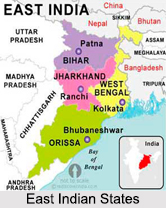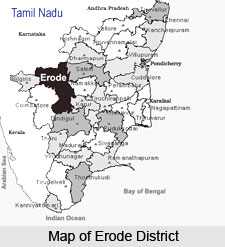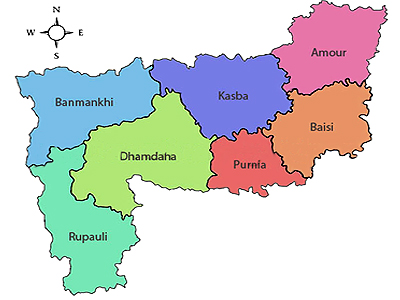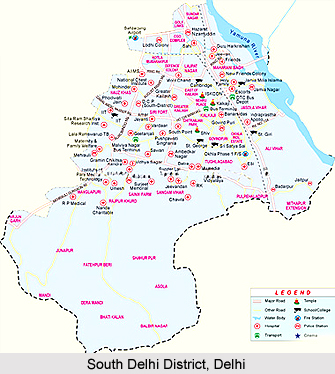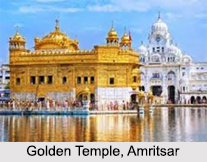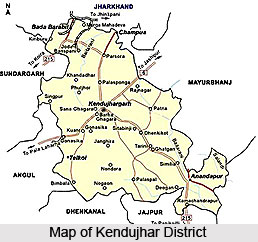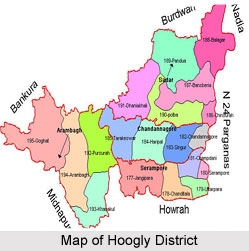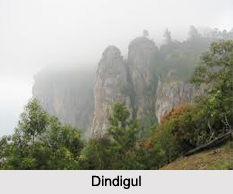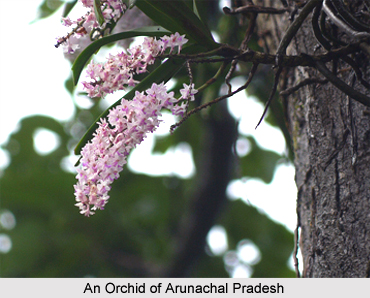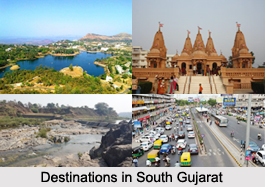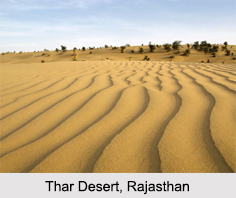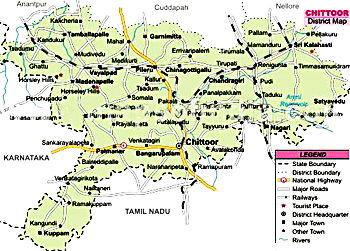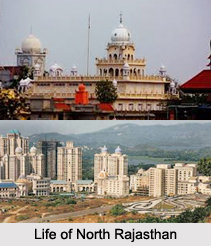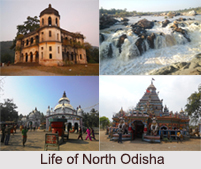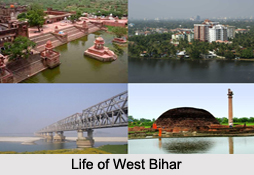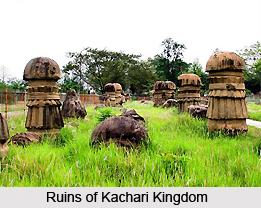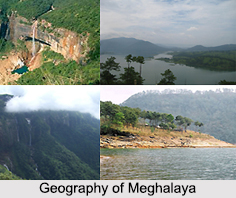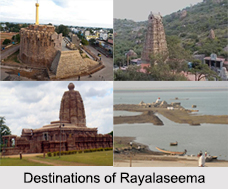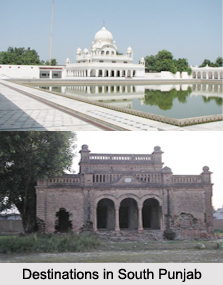Introduction
 Tumkur district in Karnataka consists chiefly of elevated land that is intersected by river valleys. An array of hills crosses it from north to south, forming the watershed between the systems of Krishna River and Kaveri River. The major streams are the Jayamangala and the Shimsha. Iron is obtained in large quantities from the hillsides and building-stone is also quarried.
Tumkur district in Karnataka consists chiefly of elevated land that is intersected by river valleys. An array of hills crosses it from north to south, forming the watershed between the systems of Krishna River and Kaveri River. The major streams are the Jayamangala and the Shimsha. Iron is obtained in large quantities from the hillsides and building-stone is also quarried.
Demography of Tumkur District
According to the Population Census in the year 2011, the Tumkur District had population of 2,681,449 of which male and female were 1,354,770 and 1,326,679 respectively. The population of Tumkur District constituted 4.39 percent of total population of Karnataka. In 2001 census, this figure for Tumkur District was at 4.89 percent of Maharashtra population. The average literacy rate of Tumkur in 2011 was 74.32 compared to 67.01 of 2001. If things are looked out at gender wise, male and female literacy were 82.05 and 66.45 respectively.
Temples in Tumkur District
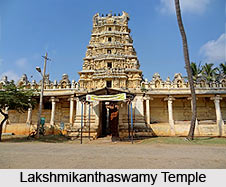 Temples in Tumkur district are magnificent art works. Tumkur District lies in the eastern part of Karnataka and is located to the west of Mysore. The town, Tumkur was established by Kante Arasu of the Mysore royal family, thus the temples of Tumkur District depict a royal grandeur.
Temples in Tumkur district are magnificent art works. Tumkur District lies in the eastern part of Karnataka and is located to the west of Mysore. The town, Tumkur was established by Kante Arasu of the Mysore royal family, thus the temples of Tumkur District depict a royal grandeur.
The main temples of Tumkur District are Lakshmikanthaswamy Temple, Gulur Ganesh Temple, Shri Kamakshi Sharadamba Temple, Siddhaganga, Turuvekere, Devarayanadurga. Veerabhadreshwara Temple is one of the important temples of Tumkur District that is situated at Dillinkote village in Tumkur District of Karnataka. This temple is dedicated to Veerabhadreshwara or the soldier avatar of Lord Shiva. The sanctum sanctorum enshrines two main idols, a naturally formed Shivling, the phallic emblem of supreme creative energy, and a statue of Lord Shiva in standing posture holding a sword and shield.
Kalleshvara Temple inTumkur
Kalleshwara Temple is an important temple of Tumkur District, built by the ancient Nolamba Dynasty of the 9th century, Kalleshwara Temple in Aralaguppe is a lovely temple with only attached pillars in the front. The interior of the temple is adorned with beautiful sculptures of gods. Siddarameshwara Temple lies in the Belagumba Village of Tumkur District and dates back to the 15th century. The temple belonged to the rulers of Hoysala dynasty. According to a legend, the idol of Lord Shiva in the Linga form was found among the rocks of the hill.
Goravanahalli Mahalakshmi Temple in Koratagere is one of the important temples of Tumkur District. This unique and ancient temple attracts thousands of pilgrims. Madhugiri Bhagawan Mallinatha Temple is devoted to Bhagvan Mallinatha. The idol made of Panchaloha (5 metals) is found in the kadgasana posture.
On South Kunigal Road of Tumkur there is Chenna keshava temple which has the idol of Sri Chenna Keshava that was carved by famous architect Sri Jakanachari and his son Sri Dankanachari. In Yediyur there is a Varadaraja temple and two Veerashaiva Mathas.
In the town of Siriya there is the Gopalakrishna temple that has no image and it is said to be housed in the Narayana temple. To the south of Sira is a Narasimha Swamy temple that was built during the 18th century by Nallappa an officer under Haider Ali. The temple is decorated with mural paintings depicting the themes of Ramayana, Mahabharata and Dashavatara.
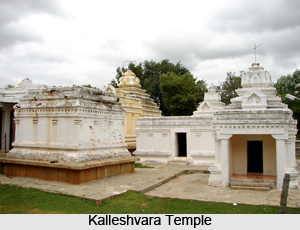 Kalleshvara temple is situated in the village of Aralaguppe at the Tiptur taluk located in Tumkur district of Karnataka. The temple exhibits spectacular example of Western Ganga art belonging to 9th century. However according to historian I.K. Sarma, influences of Nolamba and Badami Chalukya can also be witnessed in the temple. Kalleshvara temple is dedicated to the Hindu God Lord Shiva, also known as Ishvara. A vassal king of the Nolamba dynasty had commissioned the temple.
Kalleshvara temple is situated in the village of Aralaguppe at the Tiptur taluk located in Tumkur district of Karnataka. The temple exhibits spectacular example of Western Ganga art belonging to 9th century. However according to historian I.K. Sarma, influences of Nolamba and Badami Chalukya can also be witnessed in the temple. Kalleshvara temple is dedicated to the Hindu God Lord Shiva, also known as Ishvara. A vassal king of the Nolamba dynasty had commissioned the temple.
History of Kalleshvara Temple
The chronology of the temple has been estimated by two inscriptions found in the temple. One of the inscriptions dates back to 895 C.E. which narrates the event of the commissioning of the temple by a king of Nolamba under his overlord the Western Ganga King Rachamalla II. King Rachamalla II had also made a grant himself for the construction of the temple which also finds its mention in the inscription. This inscription is called as Kalla-degula.
Another inscription was found in the temple tank called `pushkarni`. It has been referred to as a `hero stone`. This inscription has established the fact that the region was completely controlled by the Western Ganga dynasty during this era. It has also been inferred that the Nolambas and the Western Gangas had close relationship in terms of cultural art. Common elements of architecture and sculptures have been found in both the regions. During the Hoysala period, three lateral shrines having an enclosure for the vehicle of Lord Shiva (vahana) and Nandi the bull (Nandi sala) can be found.
Architecture of Kalleshvara Temple Kalleshvara temple exhibits an impressive architecture with a square pyramidal Garbhagriha having a simple and plain exterior. A vestibule separated the sanctum from the Mantapa, called closed hall. Mahamantapa of the temple is magnificently sculptured. Phenomenal art can be witnessed at the door jamb and the lintel located above the main door. The door jamb is adorned with sculptures of Dwarapalas at its base with decorative creepers that run along the sides of the door. The ceiling of the temple comprises a panel of images. In addition to these, various other intricate and elegant ornamentations can be spotted at the nooks and corners of the temple.
Tourist places in Tumkur
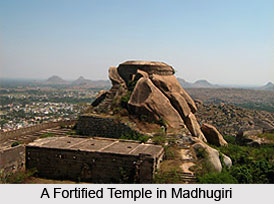 Tumkur district is a district of the Karnataka. It is situated about 70 km north of Bangalore. This place has many things to offer to the tourists. The Veerashaiva Mutt situated at Siddhaganga here is well known for its yeomen service to education and religious activities. This Mutt runs many educational institutions including an engineering college and a charitable hostel, which feeds as many as 5000 students absolutely free of cost. Some other interesting tourist places of Tumkur District are given here:
Tumkur district is a district of the Karnataka. It is situated about 70 km north of Bangalore. This place has many things to offer to the tourists. The Veerashaiva Mutt situated at Siddhaganga here is well known for its yeomen service to education and religious activities. This Mutt runs many educational institutions including an engineering college and a charitable hostel, which feeds as many as 5000 students absolutely free of cost. Some other interesting tourist places of Tumkur District are given here:
Madhugiri
This place is famous for the wonderful temples. Madhugiri is situated about 43 km from Tumkur. The Vijayanagara rulers built the temples dedicated to Lord Venkataramana and Lord Malleswara here. The famous Mallinatha Basti is also seen here. The visitors can see a citadel here with imposing gateways called Diddibagilu, Mysore Gate and Antaralada Bagilu etc.
Sira
This place was once the centre of Mughal Fauzdari and Kasim Khan, the first Fauzdar. It is now the taluk headquarters and is about 52 km away from Tumkur. Some other interesting monuments of Sira are the Khan Bhag Garden, the Jumma Masjid and Malik Rihan`s Tomb.
Seebi
Earlier, this place was known as Sibburu. It is situated about 24 km south of Sira. An ancient 18th century temple dedicated to `Lord Narasimha`, the incarnation of Lord Vishnu can be seen here. An officer under Hyder Ali named Nallappa built this tranquil temple. This temple is decorated with murals, which depicts the themes of Ramayana, Mahabharatha and Dasaavathara.
Yediyur
This place is well known for two Veerashaiva Mutts and a temple dedicated to Lord Varadaraja, one of the forms of Lord Vishnu. It is situated about 30 km from Kunigal. One of these Mutts is known as `Samadhi Mutt`, which has the 16th century origin.
Education in Tumkur District
The Educational institutions in Tumkur district are: Siddaganga Group Of Educational Institutions, SRS Group of Institutions, Shreedevi Group Of Educational Institutions, Sri Siddharatha Group Of Educational Institutions, H.M.S Group Of Educational Institutions, CIT Group of Educational Institutions and Akshaya Group of Educational Institutions, Sacred Heart Group Of Educational Institutions, Sarvodaya Group of Educational Institutions and Kautilya Academy of Management.
